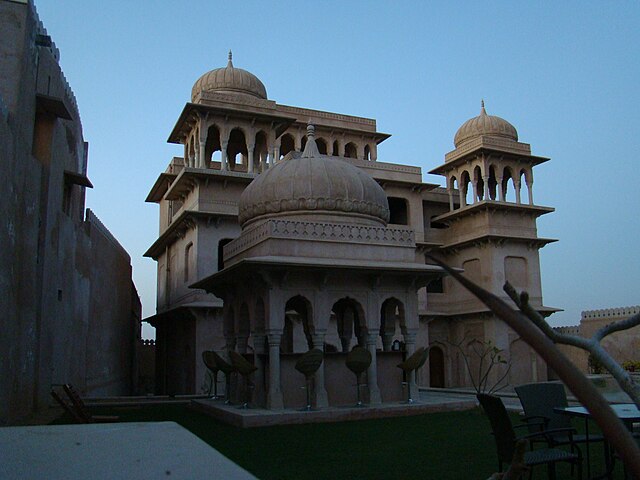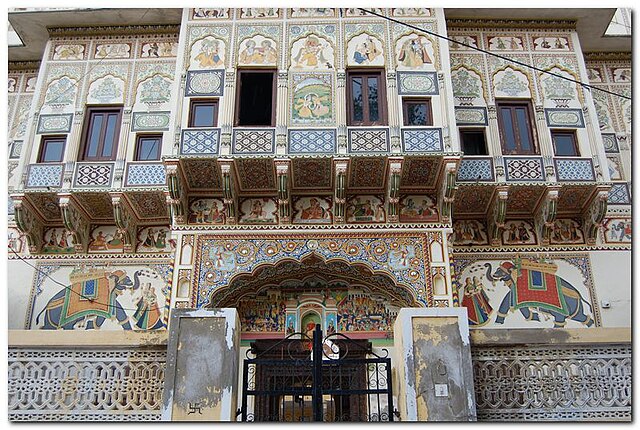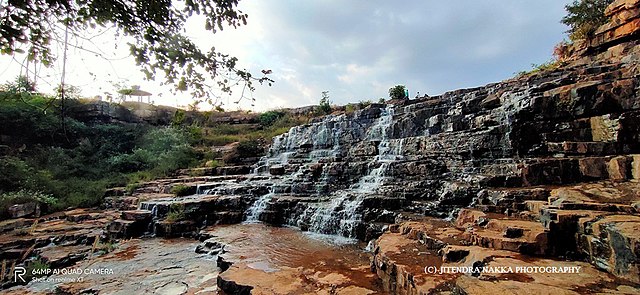Mandawa, a charming town in Rajasthan, India, is a hidden gem known for its havelis, vibrant culture, and desert landscapes. But what’s the weather like in this arid wonderland? If you’re planning a trip or just curious about Mandawa’s climate, you’re in for a treat. This guide dives deep into the weather patterns of Mandawa, offering insights into its seasons, temperature swings, and practical tips to make your visit unforgettable. So, grab a cup of chai, and let’s explore what the skies above Mandawa have in store!
Understanding Mandawa’s Desert Climate
Mandawa sits in the heart of Rajasthan’s Shekhawati region, a place where the desert dictates the rhythm of life. The town experiences a hot desert climate, characterized by scorching summers, mild winters, and a brief but impactful monsoon. Think of it like a temperamental artist—sometimes blazing with intensity, sometimes calm and serene, but always full of surprises. The weather here shapes everything from daily routines to the best times for tourism. Let’s break it down to understand what makes Mandawa’s climate tick.
Key Features of Mandawa’s Weather
The desert climate in Mandawa means extreme temperature shifts between day and night, low humidity for most of the year, and sparse rainfall. Daytime in summer can feel like standing in an oven, while winter nights might have you reaching for a shawl. The monsoon, though brief, paints the town with a refreshing vibe. These fluctuations make Mandawa’s weather both challenging and fascinating, especially for travelers unaccustomed to desert conditions.
Temperature Extremes
Temperatures in Mandawa can soar to 44°C (111°F) in summer and dip to around 5°C (41°F) in winter nights. Daytime highs in July 2025, for instance, are expected to hover around 43°C, with lows near 31°C at night. That’s a rollercoaster of heat and coolness! These extremes demand careful planning, especially if you’re exploring the town’s open-air markets or havelis.
Low Humidity and Arid Conditions
Humidity in Mandawa typically stays low, around 25-30% in summer, making the heat feel dry rather than sticky. It’s like walking through a hairdryer—hot but not suffocating. This aridity defines the desert experience, with dusty winds occasionally sweeping through, especially in the pre-monsoon months.
Seasonal Breakdown of Mandawa’s Weather

Mandawa’s weather dances through three distinct seasons: summer, monsoon, and winter. Each season has its own personality, affecting everything from what you wear to what you do. Let’s take a closer look at what each season brings to this desert town.
Summer (March to June): The Fiery Season
Summer in Mandawa is no joke. From March to June, temperatures can climb to 44°C or higher, especially in May and June. It’s like the sun decided to turn up the heat to max! Daytime exploration can be exhausting, so locals and savvy travelers stick to early mornings or late afternoons. The skies are mostly clear, with occasional hazy days due to dust storms. If you’re visiting in summer, hydration and sun protection are your best friends.
Tips for Surviving Summer in Mandawa
Wear lightweight, breathable clothing like cotton kurtas, and don’t forget a wide-brimmed hat or scarf. Carry a water bottle everywhere—dehydration sneaks up fast in the desert. Plan indoor activities, like visiting the fresco-filled havelis, during the hottest hours. And here’s a pro tip: sip on lassi or nimbu pani to stay cool and refreshed.
Monsoon (July to September): A Brief Respite
The monsoon arrives in Mandawa like a long-awaited guest, bringing relief from the relentless heat. From July to September, rainfall is moderate, with August being the wettest month. Expect about 200-300 mm of rain annually, mostly in short, intense bursts. The desert transforms, with patches of greenery sprouting amid the sandy landscape. It’s like the town gets a quick makeover, trading its dusty look for a fresher vibe.
What to Expect During Monsoon
Rainfall can make roads muddy, especially in rural areas around Mandawa. Temperatures drop to a more bearable 30-35°C, but humidity spikes to 50-60%. Pack a light raincoat or umbrella, and watch out for slippery surfaces when exploring forts or narrow lanes. The monsoon also brings out vibrant festivals, so you might catch local celebrations if you time your visit right.
Winter (October to February): The Golden Season
Winter is Mandawa’s superstar season. From October to February, temperatures range from 5°C at night to 25-30°C during the day. It’s like the desert takes a deep breath and relaxes, offering pleasant days and cool夜晚. This is peak tourist season, as the weather is perfect for exploring havelis, forts, and the colorful bazaars without breaking a sweat.
Why Winter is the Best Time to Visit
The mild weather makes outdoor activities a joy. You can wander through Mandawa’s open-air art gallery of havelis or take camel rides without worrying about heatstroke. Evenings are chilly, so pack a light jacket or shawl. The clear skies and comfortable temperatures make winter the ideal time to soak in Mandawa’s cultural richness.
Monthly Weather Patterns in Mandawa
To give you a clearer picture, let’s zoom in on what each month feels like in Mandawa. This monthly breakdown will help you plan your trip with precision, ensuring you’re ready for whatever the weather throws your way.
January and February: Crisp and Cool
Winter is in full swing, with daytime highs of 20-25°C and nights dipping to 5-10°C. The air is dry, and the skies are clear, making it perfect for sightseeing. It’s like the desert is inviting you to explore its treasures without the harsh heat.
March and April: Warming Up
Spring kicks in, and temperatures start climbing, hitting 30-35°C by April. Nights remain pleasant, around 15-20°C. Dust storms might pop up, so keep an eye on the forecast. It’s like the desert is stretching its legs, getting ready for the summer blaze.
May and June: Peak Heat
Brace yourself—these are the hottest months, with highs of 40-44°C. Nights offer some relief, dropping to 25-30°C. Outdoor activities are best done early or late in the day. Think of it as the desert testing your endurance!
July to September: Monsoon Magic
Rain brings a welcome break, with temperatures settling at 30-35°C. August sees the most rain, turning the arid landscape into a patchwork of green. It’s like the desert puts on a new outfit for a few weeks.
October to December: Cooling Down
Post-monsoon, the weather cools, with October offering highs of 30-35°C and November dropping to 25-30°C. By December, winter sets in, and nights get chilly again. It’s like the desert is winding down, ready to charm visitors with its mild climate.
How Weather Shapes Mandawa’s Culture and Lifestyle

The weather in Mandawa isn’t just about temperatures—it’s woven into the town’s culture and daily life. From festivals to food, the climate influences how locals live and how visitors experience the town. Let’s explore how the desert weather shapes Mandawa’s unique vibe.
Festivals and Weather
Winter brings a flurry of festivals, like Diwali and the Shekhawati Festival, when the weather is perfect for outdoor celebrations. Monsoon festivals, like Teej, celebrate the rains with music and dance. It’s like the desert comes alive when the weather cooperates, inviting everyone to join the party.
Local Cuisine and Seasonal Ingredients
The arid climate limits agriculture, so locals rely on hardy crops like millet and pulses. In winter, you’ll find warming dishes like ghevar and dal baati churma, while monsoon brings lighter, spiced snacks. The weather dictates the menu, making every meal a reflection of the season.
Planning a trip to Mandawa? The weather can make or break your experience, so here are some practical tips to ensure you’re prepared for the desert’s whims.
Packing Essentials
Your packing list depends on the season. In summer, pack light, breathable clothes, sunscreen, and sunglasses. For monsoon, add a raincoat and waterproof shoes. Winter calls for layers—think scarves, light jackets, and comfy walking shoes. It’s like packing for three different worlds in one trip!
Best Activities by Season
In winter, explore havelis, forts, and markets without worrying about the heat. Monsoon is great for photography, as the rain adds a magical touch to the desert landscape. Summer is best for indoor activities, like museum visits or cultural shows. Match your itinerary to the weather, and you’ll have a blast.
Health Precautions
Stay hydrated year-round—desert air can dry you out fast. In summer, avoid midday sun to prevent heatstroke. During monsoon, watch for slippery surfaces and carry insect repellent, as rains can bring out bugs. It’s like the desert is reminding you to stay sharp!
Weather Forecasting and Planning Your Trip
Want to stay ahead of Mandawa’s weather? Reliable forecasts are your best tool. Sites like The Weather Channel offer accurate 10-day forecasts, predicting highs, lows, and precipitation chances. For July 2025, expect highs of 43°C and lows of 31°C with occasional hazy skies. Check forecasts a week before your trip and pack accordingly. It’s like having a crystal ball for your travel plans!
Why Mandawa’s Weather Makes It Special
Mandawa’s weather isn’t just a backdrop—it’s part of the town’s charm. The scorching summers, refreshing monsoons, and crisp winters create a dynamic environment that shapes its culture, architecture, and lifestyle. Whether you’re marveling at a haveli’s frescoes or savoring a spicy Rajasthani meal, the weather adds a layer of adventure to every moment. It’s like the desert is telling its own story, and you’re part of it.
Conclusion
Mandawa’s weather is as vibrant and varied as the town itself. From blistering summers to soothing monsoons and pleasant winters, each season offers a unique way to experience this Rajasthani gem. Whether you’re planning to explore its havelis, dive into its culture, or simply soak in the desert vibes, understanding the weather is key to a memorable trip. So, pack smart, plan your activities around the seasons, and let Mandawa’s climate guide you through an unforgettable adventure. Ready to explore? The desert is calling!
FAQs
1. What is the best time to visit Mandawa?
The best time to visit Mandawa is during winter (October to February) when temperatures are mild, ranging from 5-30°C, making it ideal for sightseeing and outdoor activities.
2. How hot does it get in Mandawa during summer?
Summer (March to June) can see temperatures soar to 44°C or higher, especially in May and June, with dry, arid conditions dominating the season.
3. Does Mandawa get a lot of rain during the monsoon?
Mandawa receives moderate rainfall, about 200-300 mm annually, mostly in July and August. The rain comes in short bursts, transforming the desert landscape temporarily.
4. What should I pack for a trip to Mandawa?
Pack light, breathable clothes for summer, a raincoat for monsoon, and layers for winter. Sunscreen, sunglasses, and a water bottle are must-haves year-round.
Stay hydrated, avoid midday sun in summer, and use insect repellent during monsoon. Check forecasts regularly to plan outdoor activities safely.

